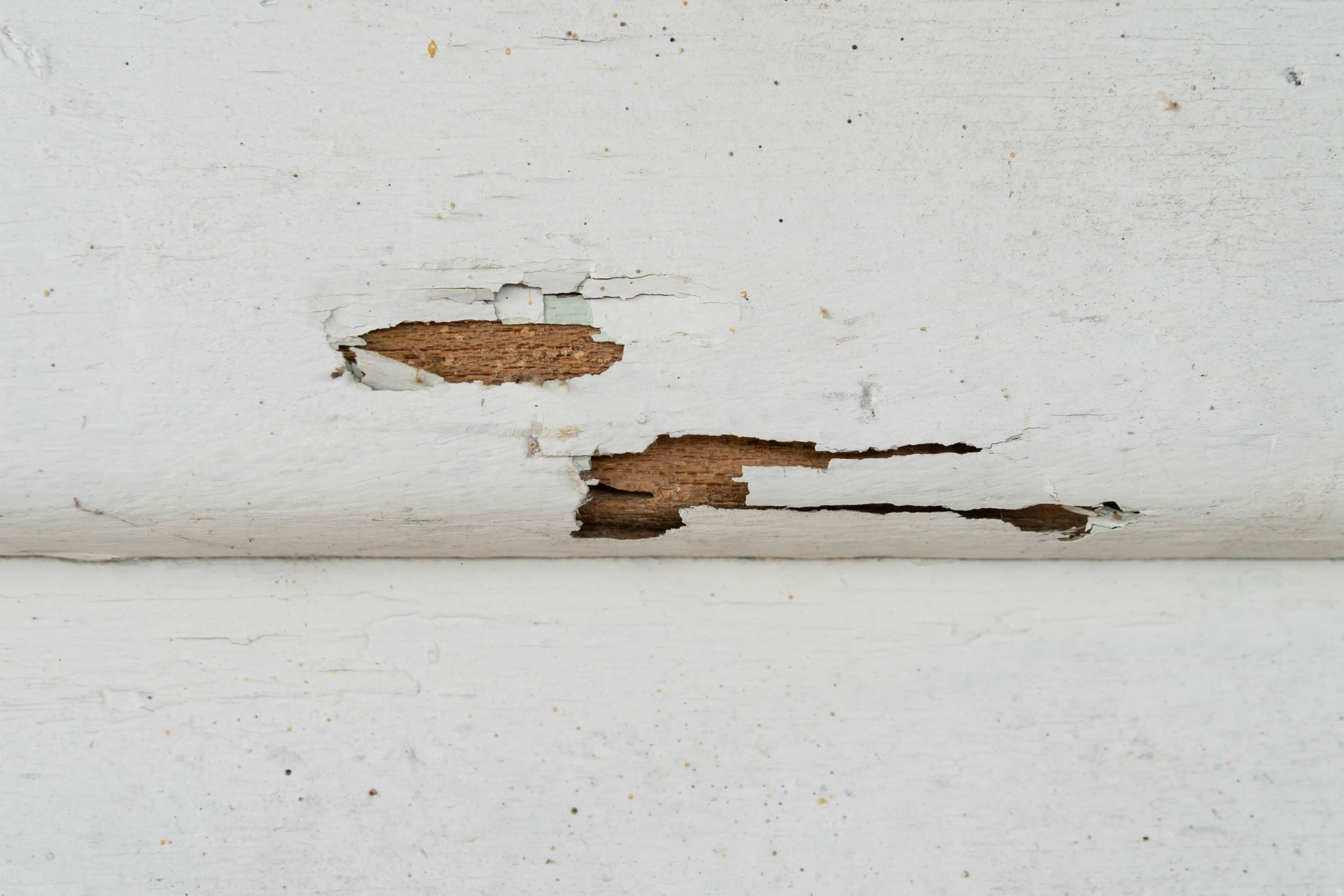It’s the time of year where you as a homeowner have to be on the lookout for the unthinkable—a termite infestation! Nothing strikes fear into the heart than the risk of termites to your beloved property. However, we are here to help. The good news is that swarms of these wood burrowing insects are just looking for new places to build nests, meaning it’s a great time to catch an issue early before it becomes a larger issue. Here are some early signs of termites to look out for.
Stuck Windows or Doors
Now that Spring is here you most likely are wanting to open doors and windows to let the warm sweet-smelling air into your home and air out a long dry winter. However, if windows are giving you trouble opening or doors seem stuck it could mean that termites are starting to move in. Termites often tend to start in locations such as windows and door frames, where wood is exposed and easy to access causing them to warp and swell.
Damage under Paint or Wallpaper
As termites feed and thrive off wood and composite board for paneling within the walls of your home, they leave behind tiny pin holes which we refer to as exit holes. Often, they achieve this without disturbing the thin coat of paint or wallpaper on the surface, which can make this type of damage very difficult to detect. However, with an expert eye you may be able to spot subtle clues that termites are burrowing in your home. Look closely for the following:
- Tiny exit holes
- Bubbling paint
- Peeling or discolored wallpaper
- Buckled wood
- Dented or sunken areas
- Narrow, sunken winding lines
Termite Swarmers & Discarded Wings
Like many insects, termites are an intricate system which consists of workers, soldiers and what we call “swarmers” due to their wings and ability to fly. Swarmers are the reproductive members of this insect society and spotting them flying inside your home is a clear sign that you share your residence with these destructive little creatures. You’ll be able to spot a swarmer by their large wings which shed after it finds a mate. If you spot insect wings in your home they may belong to a swarmer, which means it’s time to act. Be sure to remember that there are many look-alikes, such as flying ants. However, a swarmer has two evenly pairs of wings and often congregate around light sources.
Mud Tubes
If you see mud tubes, this is a clear sign that termites have moved in and happily munching on your home. Mud tubes resemble narrow veins which run along the side of your home, starting from the ground, and running towards areas with exposed wood. These tubes are important for protecting termites from dryness in the air as well as allowing them to safely travel from their colony to their food source.
If you suspect you have mud tubes in your home a great way to know they are occupied by an active termite colony is to break off a piece. You may find termites inside, but even if you don’t come back to the same spot the next day. If the tube has been rebuilt it’s time to act around a termite infestation.
Termite Droppings
In dry wood termites, which house themselves in the wood of your home their droppings are referred to as “frass” which occurs as termites eat through the wood, digest it and push it out of the colony to clear space. In dry wood termite populations frass is wood-colored and pellet-shaped, often mistaken for wood chippings. For another common type of termite, subterranean, colonies live underground and are harder to spot. However, they use their droppings to build their mud tunnels.
Taking Action
Don’t wait for signs of termites to get worse! If you are concerned that you suspect you have termites, it’s always better to act than risk serious damage and renovation to your home. Termite colonies take between 3–5 years to mature, and the sooner you act the better. We are here to provide services to stop termites in their tracks and offer regular scheduled service to make sure they don’t come back. Contact us today for an inspection now!


